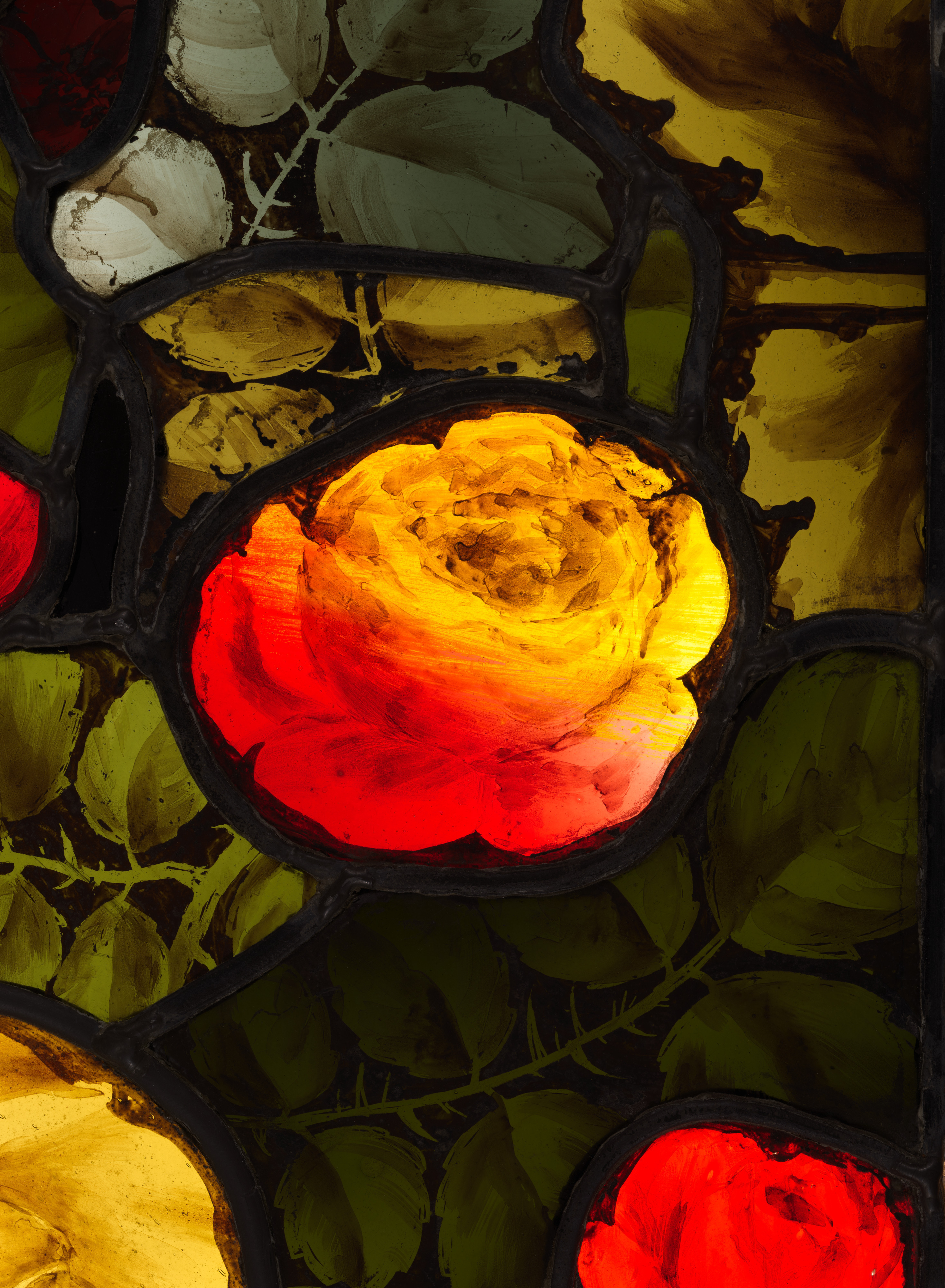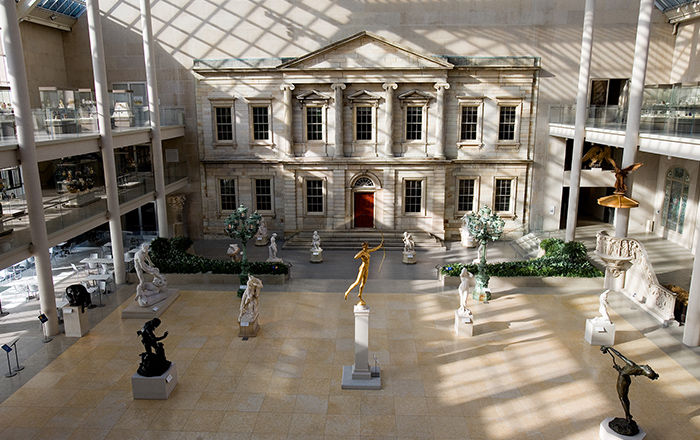Stained glass window
Daniel Cottier British, Scottish
This window is securely attributed to Daniel Cottier, a glass stainer and ultimately decorator and dealer who began his career in Glasgow, moved to London where he perfected his mature aesthetic style, and then in 1873 opened a workshop in New York under the name "Cottier & Co., Upholsterers, Fine Cabinet Makers, Glass strainers, etc., Art Rooms." Cottier’s first major stained-glass commission in this country was for Trinity Church in Boston (1878-79), but his work is found in other contexts in the Northeast, earlier and later. He is generally credited with being the first to introduce the Aesthetic style to America.
Cottier, like John La Farge, was among the first to introduce new floral subject matter to stained glass, epitomized by this window. The window relates closely to a three-panel window made for the Newport house of W. Watts Sherman in 1877-78, and now in the collection of the Museum of Fine Arts, Boston. This is a quintessential Aesthetic window: its subject matter—even the specific floral motifs selected (morning glories, marguerites, and peonies with foliage on a golden trellis); the palette of olive green foliage and deep peacock blue background; and the flat, decorative and asymmetrical composition on a bamboo lattice that connects it to the vogue for Japanese prints. It shows technical innovations in glass that was just becoming available in the blossoms that shade from a rich yellow to a deep rose.
This image cannot be enlarged, viewed at full screen, or downloaded.
This artwork is meant to be viewed from right to left. Scroll left to view more.




